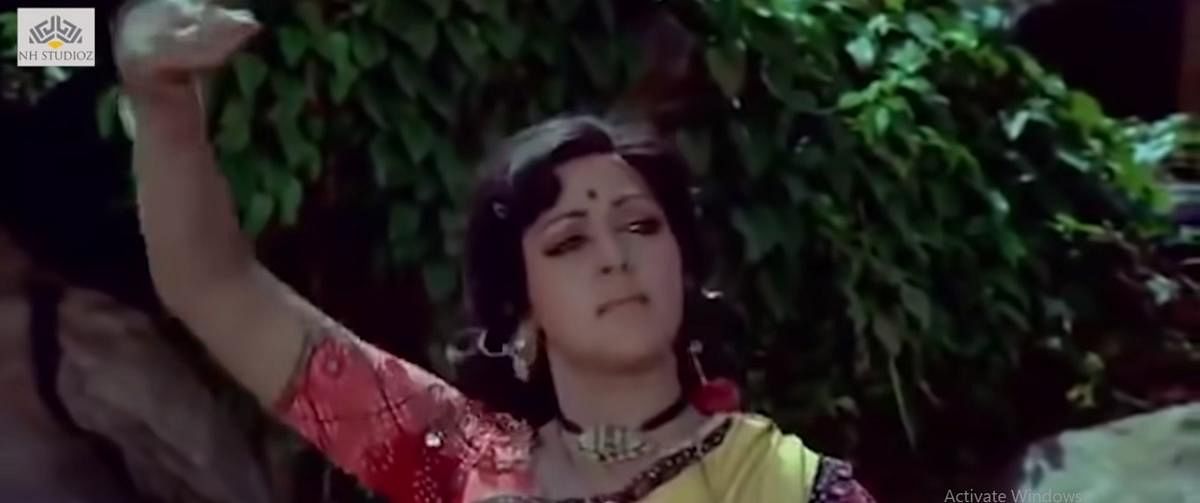
Here is a Lata Mangeshkar secret which she had revealed when we met: “Some people are fond of saying that I change my voice for different actresses but that’s not true. My voice just seemed to fit everyone. I would definitely observe all the actresses and their styles and habits. That must have helped.”
Given this fact, it is interesting to see how Lata, at different stages of her career and experience, sat ‘pat’ on many generations of heroines, from a debut-making Nimmi in impish mood (‘Hawa mein udta jaaye’ from ‘Barsaat’) to Preity Zinta (‘Jiya jale’ from ‘Dil Se’…) in 1998 and Kareena Kapoor Khan (‘Andekhi anjaani si’ in ‘Mujhse Dosti Karoge’) in 2002.
While she has rendered songs for almost all iconic actresses, including Helen (“Aa jaanejaan” from ‘Inteqam’) and Smita Patil (‘Dushmun na kare’ from ‘Aakhir Kyon?’), she had a special “vocal bond” with six actresses.
Nargis
Lata’s breakthrough came in 1949 with four films, of which two, ‘Barsaat’ and ‘Andaz’, featured Nargis. These films cemented Lata with the actress in a lasting bond. ‘Awara’, ‘Chori Chori’, ‘Aah’, ‘Mother India’, ‘Jagte Raho’ and ‘Shree 420’ had a huge parade of Lata chart-toppers. The stunning swansong was Nargis’ home production ‘Raat Aur Din’, with its Lata-fest of a score that included ‘Raat aur din diya jale’, ‘Dil ki girah khol do’ and ‘Na chhedo kal ke afsane’.
Meena Kumari
The will-o’-the-wisp persona of Meena Kumari saw Lata exhibit myriad shades in her singing. From ‘Baiju Bawra’ (1952) to ‘Pakeezah’ (1972), the combo excelled in every genre of song. So in between the plaintive ‘Mohe bhool gaye saawariya’ of the former and the naughty mujra, ‘Inhi logon ne’ from the latter, came a spectrum of compositions—’Krishna o kaale Krishna’ (‘Main Bhi Ladki Hoon’), ‘Ajeeb dastaan hai yeh’ (‘Dil Apna Aur Preet Parai’) and ‘Nigahen kyoon bhatakti hai’ (‘Baharon Ki Manzil’) among others.
Vyjayanthimala
The Bharatanatyam danseuse worked with popular composers such as Shankar-Jaikishan, Naushad, C Ramachandra, Salil Chowdhury, Hemant Kumar and SD Burman. All were Lata devotees. Yet, the excellence of their team was not restricted only to dance numbers such as ‘Man dole mera tan dole’ (‘Nagin’), ‘Honthon mein aisi
baat’ (‘Jewel Thief’), Thandi thandi hawa’ (‘Prince’) and ‘Tadap Yeh din raat ki’ (‘Amrapali’).
Nutan
Nutan could be visualised as a simple village girl, the urban woman, the mercurial girlfriend, the grieving wife or the devoted mother. In every avatar of hers, Lata was her playback voice of choice, and their last stunning association came with ‘Jeet jaayenge hum’ (‘Meri Jung’ in 1985). En route, there were winners all the way in award-winning scores like ‘Anari’, ‘Saraswatichandra’, ‘Milan’, ‘Bandini’ and ‘Seema’.
Sadhana
The Lata Mangeshkar-Sadhana professional relationship began with ‘Parakh’ (‘O sajana barkha bahaar aayi’) in 1960. It ended with ‘Geetaa Mera Naam’ (‘Suniye zaraa dekhiye na’) in 1974, the first and last film directed by Sadhana as well. For Lata, Sadhana was special, and in Inteqam’s ‘Kaise rahoon chup’ (which topped the Binaca Geet Mala countdown in 1969), she determinedly voiced even the drunken “hics” herself, rather than allowing someone else to do them, as composers Laxmikant-Pyarelal suggested!
Hema Malini
Lata sang extensively for Hema’s
peers like Raakhee, Rekha, Zeenat Aman and others. But she felt that
Hema’s enactment of her songs (including dance numbers) made her special. A singer-star bond is not just about success or musical excellence but also about the efforts put in by both. And Hema excelled in the filming of songs like
‘O babul pyare’ (‘Johny Mera Naam’), ‘Jab tak hai jaan’ (‘Sholay’), ‘Sa re ga ma pa’ (‘Abhinetri’) and ‘Dheere dheere bol’ (‘Gora Aur Kala’) among dozens of others.